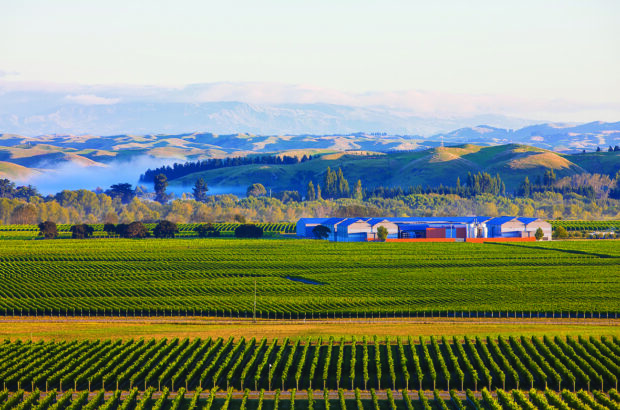How’s the weather been this year? Awful. ‘La nature m’écoeure’, one of my wine-growing friends posted on Facebook on 8 April, having been out to look at the frost-crippled shoots on his vines that morning: ‘Nature disgusts me’. It takes a lot to make a wine-grower feel that.
He wasn’t alone. Jeremiads echo around the northern hemisphere as 2021 closes. It’s been the year of all the miseries.
None suffered more horribly than the growers of Germany’s Ahr valley, where floodwaters caused by the four-day stalling of Storm Bernd from 12 July over eastern Belgium and western Germany damaged or destroyed 65 wine estates and four cooperatives, costing 133 lives and pulverising homes, bridges and railway lines.
The response from wine lovers and Germany’s wine community has been magnificent, but a full recovery from this terrifying midnight assault by water, which was played out to the sound of shattering windows, falling trees and cries for help from roof-stranded children, will take years.
There were more damaging floods in mid-September, too, in the Gard and in Hérault, southern France, affecting vineyards still carrying 20%-40% of the year’s crop.
Economically, most of the hit in Europe was taken early in 2021 – due to those April frosts, which (as in 2016 and 2017) followed an early budburst after a mild winter. This fatal pincer movement is beginning to look like the most sinister of all global-warming threats to northern hemisphere wine-growers.
As I described in my April Decanter column, vines and growers alike have been managing to cope well with the record summer heat recorded in vintages such as 2018, 2019 and 2020 – but it’s the winter temperatures that have been rising ever more steeply than summer ones. Arctic warming disturbs the functioning of both the polar vortex and the jet stream, meaning that icy polar air now repeatedly bulges down into mid-latitudes during spring.
France has lost at least a quarter of its normal crop – and perhaps €2bn (£1.7bn) in potential revenue – this year, making the frosts more damaging than those of both 2017 and 1991.
Only Cognac, Savoie and Alsace were spared. A ‘warm’ region such as Châteauneuf-du-Pape, once considered near-immune to frost, has now seen frost strike two years in succession.
A rainy summer then followed for most regions, with further damage from downy mildew, powdery mildew, black rot and botrytis: parts of Champagne and Burgundy lost about 30% of their vineyards to frost, then another 30% to disease. Roussillon in the southwest struggled with ongoing drought conditions, and the southern Rhône and Provence had to confront both hail and forest fires.
Italy and Spain have seen reduced crops this year, too, though the shortfall for both is less severe than in France (9% in Italy, for example). Drought and wildfires, meanwhile, continue to be a daunting challenge to the vineyards of North America’s Pacific coast, with drifting smoke plumes and smogs troubling growers from California all the way up to Okanagan.
Nor is disorder in nature the only challenge to wine-growers. I’ve often thought, this year, of the almost unimaginable problems facing wine producers and exporters in three countries in particular: Lebanon, hit by one of the world’s worst economic crises of the past 150 years; Argentina, its ongoing recession combined with inflation above 40%; and South Africa, where Covid-19 led to no fewer than four total bans on alcohol between March 2020 and July 2021.
We look at bottles of wine and we see joy and pleasure, smiles and warmth – and we’re grateful. When the very existence of the bottle is a triumph over extreme misfortune, though, even gratitude seems inadequate.
If you ever feel like drinking wine in solidarity with the struggles of growers and their workers, labouring to produce the wines which bring us such pleasure, then this Christmas must be the time to do that.
In my glass this month
A taste, last week, of an outstanding aged Etna red: Tenuta delle Terre Nere, Calderara Sottana 2012. Grown on black, stony pumice soils, this wine was aromatically truffled and mellow, its fine tannins embedded in the natural sweetness of its Nerello Mascalese and Nerello Cappuccio fruits: serious, grand, classic red wine. As I drank, I wondered what the temperature was in this high-altitude (600m-700m) vineyard while Sicily’s Syracuse, 100km further south, was recording Europe’s highest temperature ever, on 11 August this year, at 48.8°C.












